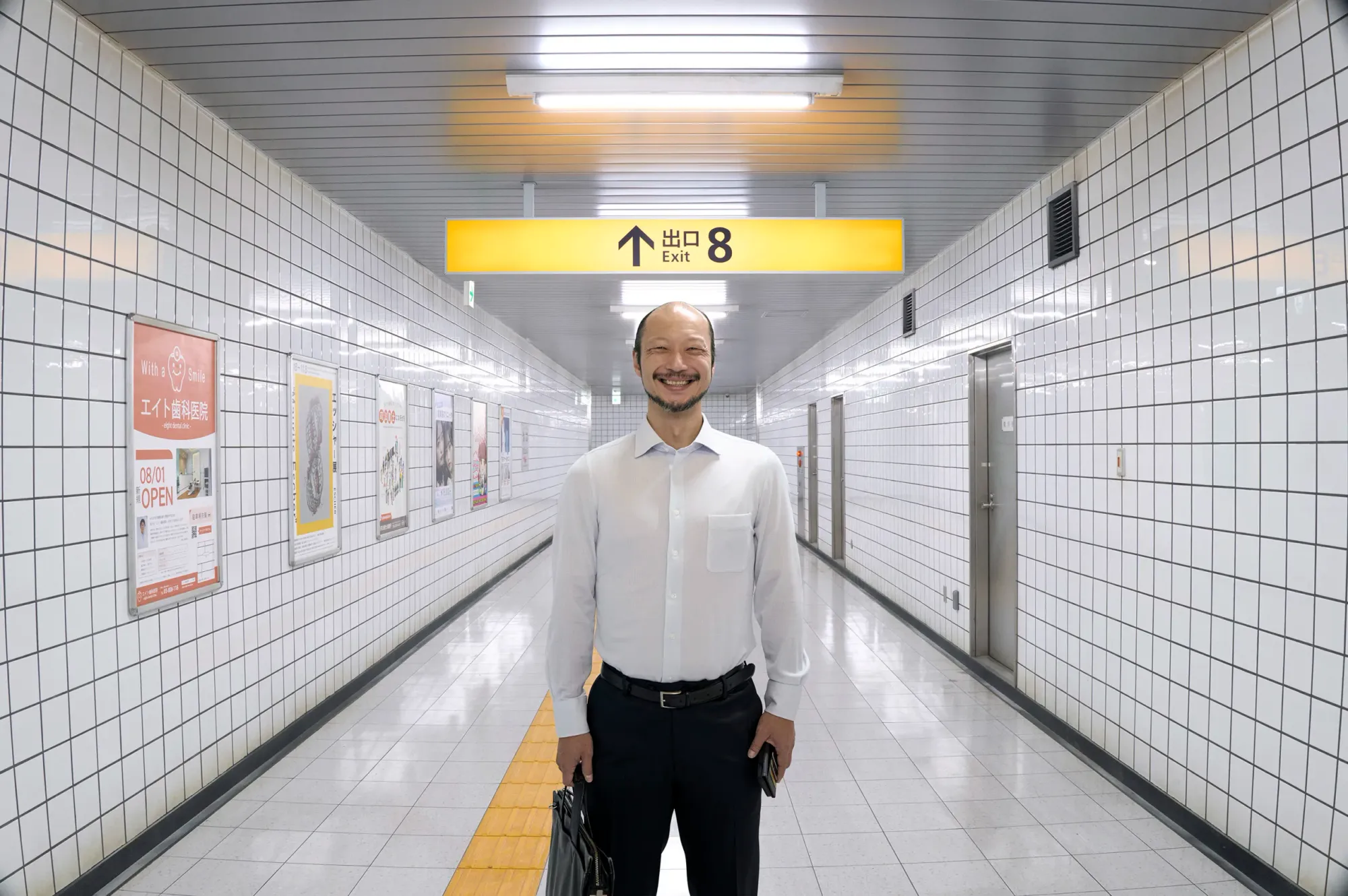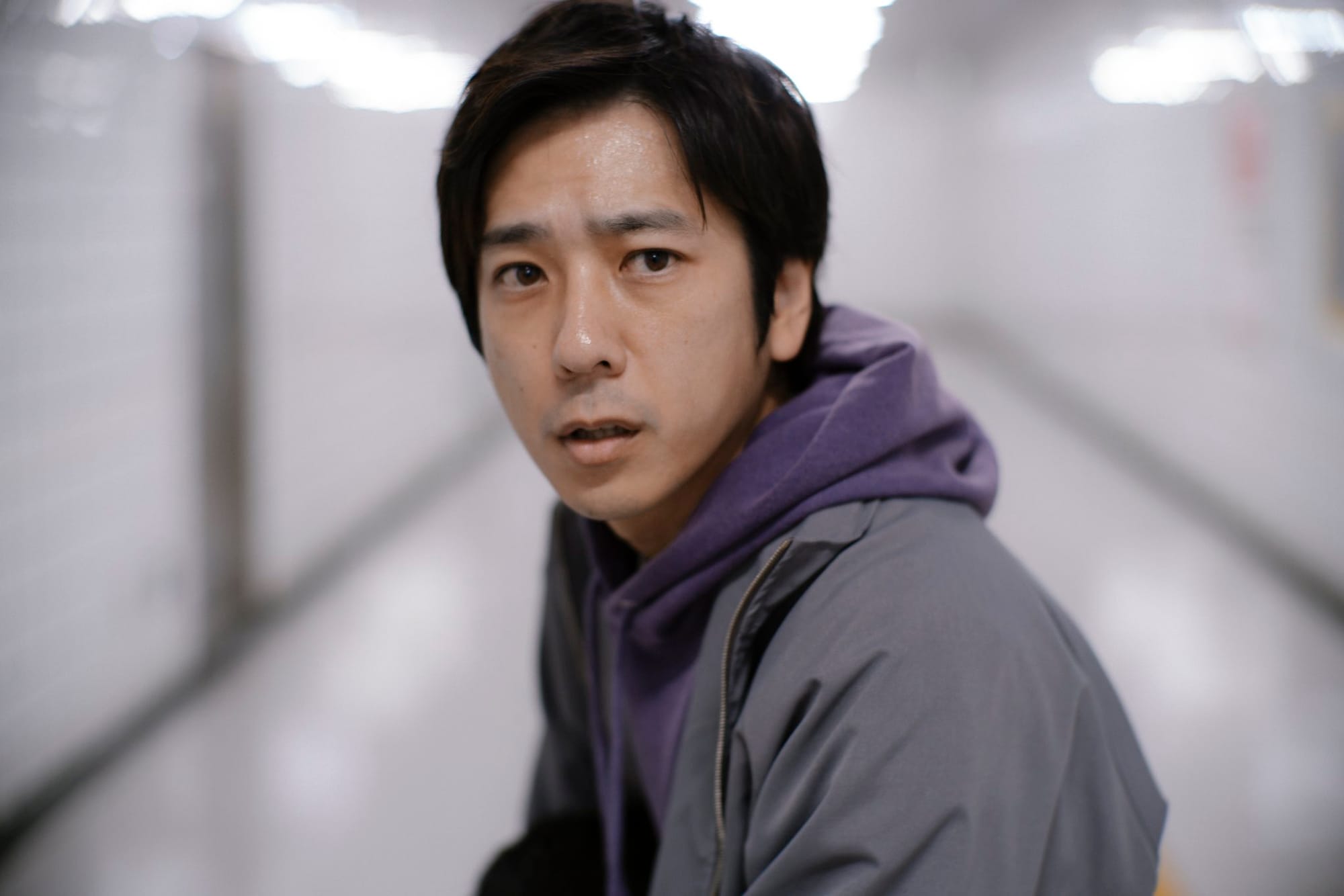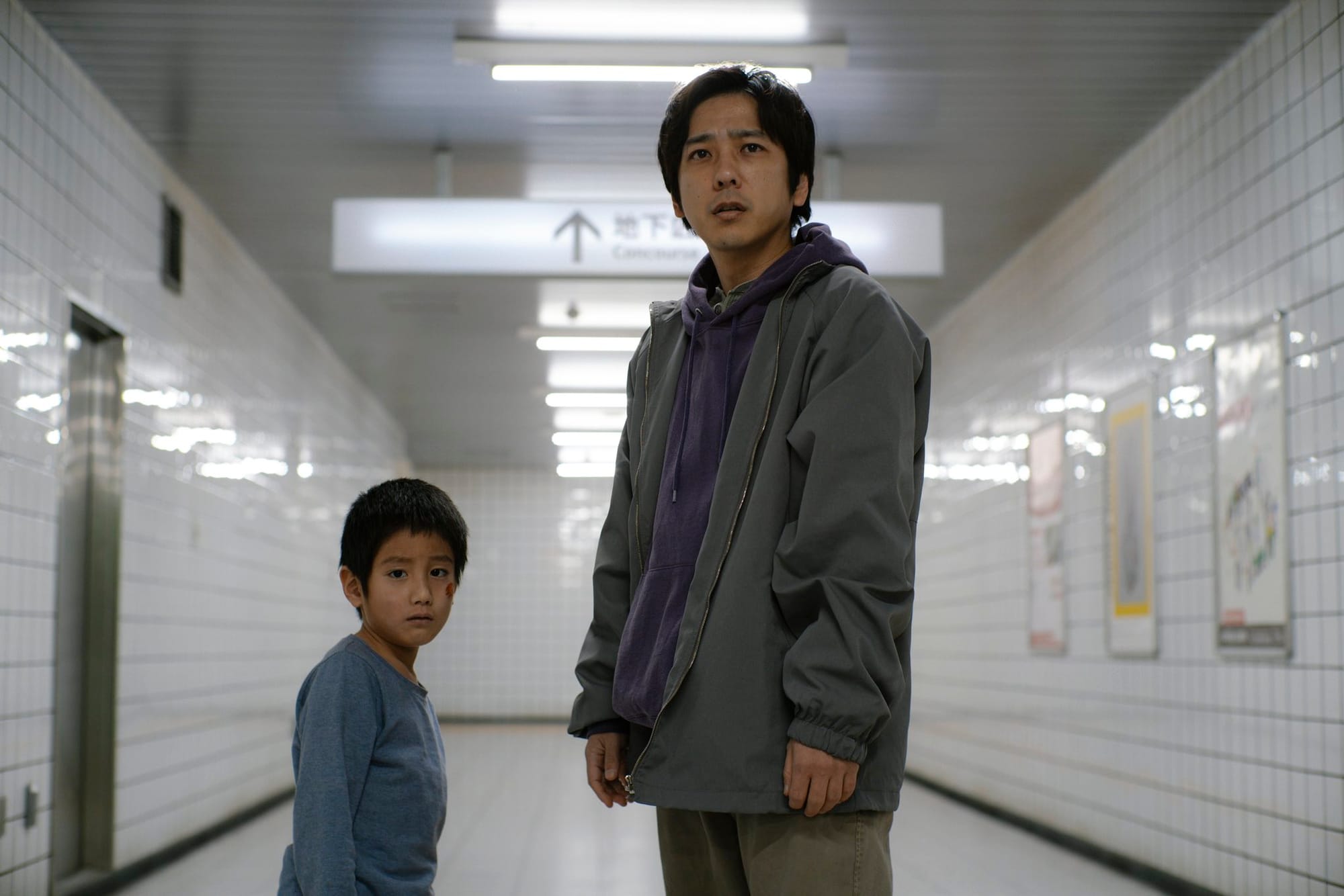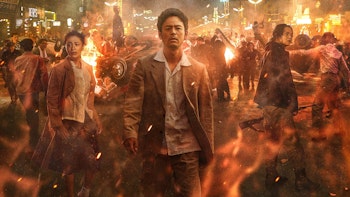
The Exit 8 became a viral hit upon its initial release for its simple yet thrilling (if brief) horror experience rooted in everyday fears. You’re in an endless maze of Tokyo’s underground metro, seeking Exit 8. To get there, you wander the same corridor repeatedly looking for anomalies. If there is, turn back. If not, keep going. Repeat it, and you can escape. The anomalies may be small, like a misplaced door handle, or something more sinister and shocking. Either way, you must escape.
It’s great, and has now been released on just about every platform and become a global hit for its solo developer, KODAKA CREATE. It’s also, famously, a silent, non-narrative game that can be finished a first time in mere hours with a speed run taking just minutes. A film always seemed like a weird direction, if a financially sound one, though it’s the nature of its adaptation that raises the most eyebrows.
The corridors represent the halls any Japanese salaryman may face on their work commute, the train and station a simple fact of life. You could say the monotony is a representation of the grind of work, of a life dedicated to the corporate machine. It makes sense, though that’s surprisingly not the direction this adventure takes. The unnamed Lost Man (former Arashi member Kazunari Ninomiya) is on his way to work, like everyone else refusing to intervene as another man berates a woman with their crying baby for the noise. However, as he leaves the train he gets a call from his wife, who’s currently at a hospital after finding out they’re pregnant and unsure whether to keep it. Before the conversation is truly resolved with the Lost Man equally unsure of his preparedness to be a father he loses signal, and finds himself in the corridors we’ve come to find all-too familiar.
Here, the loop is the same. Find a way out. Though a few new horrors have been integrated into the mix.
There are some things the movie does admirably to attempt to recreate the experience of a game reliant on its interactivity, without being able to actively intervene in the events at hand. The corridors are an exact replica of the ones from the game, with the set built to create a 1:1 replica that promotional material saw numerous Japanese YouTubers traverse with glee. The creation immediately immerses you into the purgatorial space the corridors occupy, never-ending yet always changing. The posters are an exact recreation, as are the doors and signs. The team even collaborated with the Tokyo Metro to ensure the materials used for the Exit 8 sign itself were the same, alongside the directions marking the fake locations of Happongi Crossing.

It makes you want to look around yourself for anomalies, which is a fascinating attempt of trying to blend film and game by taking cues from the source material. Unfortunately, it only becomes frustrating when an attempt to cater to both those who have and haven’t experienced the initial adventure gets in the way of the most important aspect of any horror thriller: building tension. The movie wants you to keep looking for mistakes, but since you aren’t given the chance to grow accustomed to all you see like our Lost Man, the movie has to make it obvious.
Not only are these scenes oddly framed awkwardly distant from the actor to allow the setting to stand as a scene partner, robbing these scenes of the intensity of the original first-person perspective only given an homage in the opening sequence robs the film of that same dread. The attempt to let us spot the anomaly mixed with the need to make it clear for the audience ruins the dread of finding the eyes of the posters following you when you spend a minute before the character notices making it clear to even unobservant viewers.
Worse, it makes our Lost Man feel dense. Moreover, as a lonely traveler down these halls, it’s hard to create interesting dialogue, an issue Exit 8 never resolves. Events soon feel repetitive as we endlessly repeat corridors as he calls out what he sees around him - ‘poster, old man, door’ - ad nauseam for a full third of the film. To rectify it he finds a young boy also lost in the halls and they seek a way out together, but this only further highlights the futility of making a nameless solo protagonist who never speaks the lead in your story.

A sense of narrative stakes is introduced by giving him asthma, with this being drilled into the audience by making him require it nearly every hallway. But as soon as the boy appears, he never needs it again, seemingly healed of his ailment and revealing the desperate needs of writers to find ways to make this even slightly interesting.
The baby itself adds an uncomfortable dimension to the story at odds with even the basic framework once established with the base game. If you could see the slog of endless corridors representing employment, a child transforms that to something far removed from this to a story more interested in challenging the country’s changing population. A baby’s cry and other new terrors feel all tailored to this, as well as the few new characters in the boy and wife, are created to question the viewpoints on parenthood with a salvation from disaster hinging on the embrace of fatherhood. It’s a move so at odds to feel jarring and creates something that tosses away at least the relatability of the commute and turns it into a conflict on declining population that felt at odds. I was left simply confused by the decision.

Not everything added to give narrative depth to a non-narrative tale was bad. The Walking Man circling the characters was given a reason for their presence that ties both to the original setting and new storylines, making them arguably the highlight of the film. Their actor Yamato Kochi, typically a star of the stage not the screen including major roles in Orlando and the recent JoJo Bizarre’s Adventure musical, has an uncanny ability to jump between the creepy unease of the emotionless husk of the game to their own, panicked yet surprisingly complex take on the role. If the expansion of the protagonist felt forced, his fears felt more in line with the spirit of the game, which is perhaps what made it feel more at-home in the movie.
But that’s not enough to save this film. Whereas you could expand the horror of the original into something meditating on the perils of Japanese society’s relationship to work, it simply doesn’t work here. A few neat ideas and a superb recreation of the original corridors don’t save a film that mostly just feels tired and confused. Exit 8 tries as it might, but turning a very brief non-narrative experience reliant on interaction into a film betrays each of its 90 long minutes, leaving me less tense and ill-at-ease and more relieved as the credits rolled.










